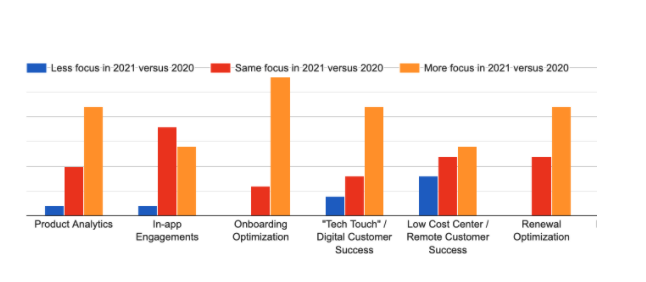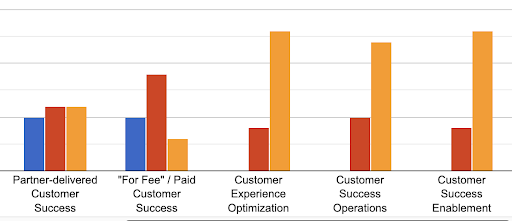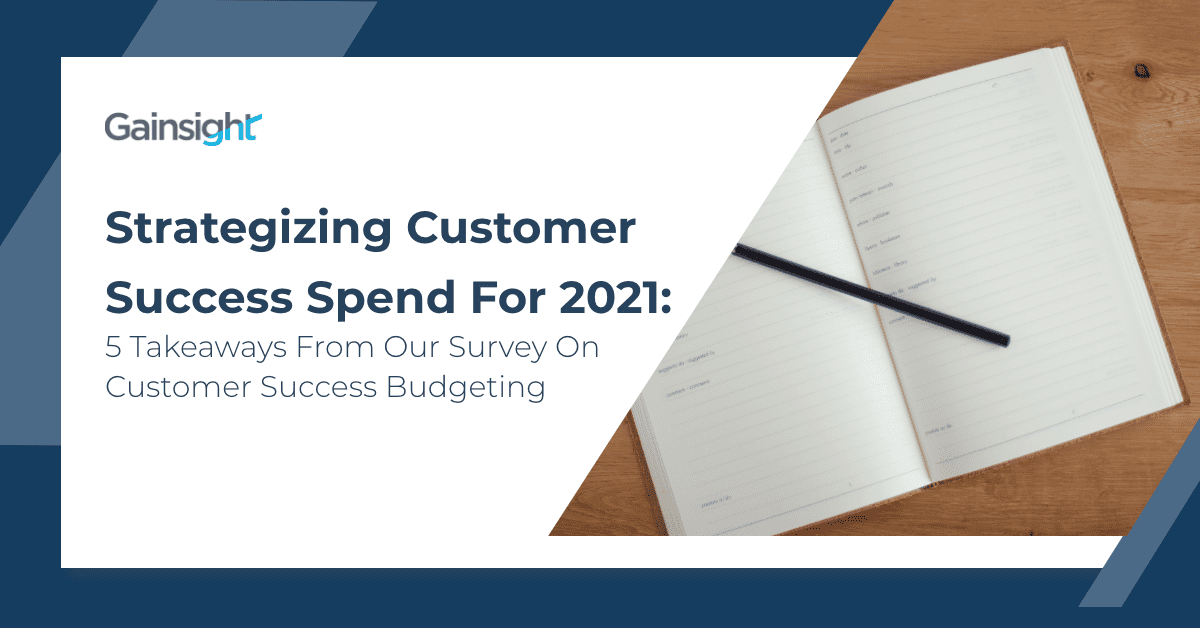It’s hard to believe that we’re just a couple of months away from 2021. To say that 2020 has been a challenge would probably be the understatement of the century so far—and I think I speak for everyone when I say that I am cautiously optimistic that we’ll launch into 2021 feeling better about how things are going—in business and life.
That said, 2021 will undoubtedly bring with it a new set of challenges & questions that we’ll need to be ready to address. And one of the most important ones that we hear about from leaders is: “How much money should I spend on Customer Success in this upcoming year?”
The answer to this question has always been dependent on several different factors. In these uncertain times, we have even more things to consider: the industry you are in, the type of recovery you are experiencing, and what adjustments you made in 2020 that need to be re-visited in the new year.
To try and dig deeper into this topic, we sent out a survey in early October to leaders of public and late-stage private SaaS companies asking how they are thinking about their CS budgets for 2021. The responses demonstrated that—across the board—companies are doubling down on CS in 2021. They will try to recapture some of the growth that they didn’t achieve this year and get back to focusing on CS as an expansion engine and not just a risk mitigation strategy that has so often been over the last six months.
Here’s what else we learned:
1. CS Spend: Revenue Varies Based on Company Size
One of the metrics that we focused on as part of this analysis was the ratio between CS Spend and revenue. This can be a useful benchmark to estimate how you should be budgeting for CS at your organization. But ideally, you compare this to companies similar to yours, especially when it comes to size.
We found that companies with below $250M in ARR on average, spend 8-10% on CS, while companies above that $250M threshold spend an average of 3-5%, relative to ARR. Obviously, that percentage is going to go down as the amount of impactable revenue goes up. However, we also see efficiency gains as companies grow ARR with more mature CS functions that also accounts for that ratio going down.
2. Higher CS Spend = Higher Growth Rate
Another interesting variable to consider when determining your optimal CS Spend: Revenue ratio is your growth rate. When comparing CS costs to ARR, companies projecting a 30%+ growth rate year-over-year are spending on average 8%. Companies experiencing less than 30% growth are spending closer to 5%.
This is often a bit of a chicken and egg scenario, so it can be difficult to attribute more CS spend to higher growth definitively. However, it’s clear that companies are choosing to invest in CS during periods of rapid scaling. This allows them to continue to drive outcomes for their new customers while scaling at a record pace.
3. CS Spend: Revenue in 2021 Will Be Slightly Up
When comparing this ratio in 2020 to the plan for 2021, the data pointed to a slight uptick, with nearly one-quarter of respondents saying that they expected this number to go up next year. This trend seemed to be most common for companies with less than $250M revenue, which may signal expectations for faster growth & scale in 2021 for that group.
The rest of the responses indicated a pretty consistent amount of spending in 2021 compared to this year, which in many cases still reflected increased investment in CS and a sizable increase in revenue as companies look to get back on track.
4. Companies Are Investing in CS Operations
One of the most consistent growth and investment areas that we see companies make is their CS Operations function. Organizations that historically had just a resource or two supporting extensive CSM teams are now focused on scaling these functions so that their CS team can continue to evolve as their business evolves.
We’re now seeing an average ratio of 16:1 in terms of CSM FTE’s compared to CS Ops FTE’s. As usual, this varies based on company / team size with smaller orgs (< $250M revenue) having a 12:1 ratio while larger orgs (> $250M revenue) are closer to 21:1. But regardless of size, this was something that was called out by nearly every organization that we surveyed.
5. Optimizing Onboarding & the Customer Experience = Huge Priorities in 2021
The last thing we asked was, “so how are you going to spend your CS money next year in terms of specific initiatives?” Analyzing the responses highlighted two big themes: 1) 82% are focused on optimizing the onboarding process for their customers to start driving value and achieving outcomes sooner, and 2) 75% are focused on the enablement of the CS team – in particular, performing more strategic activities and managing their portfolios more effectively.


One final point that came out of the survey was understanding how companies allocate their CS costs, which appears to be getting closer and closer to an even split between Sales & Marketing (S&M) and Cost of Goods Sold (COGS). Our data indicated about 55% including it in S&M and 45% including it in COGS.
Hopefully, this information helps you think about your 2021 strategy and how to allocate resources at the company best to drive outcomes for your customers. We would love to hear from you about how you and your company think about Customer Success, especially as 2021 is underway. Please take our assessment to share your thoughts.

